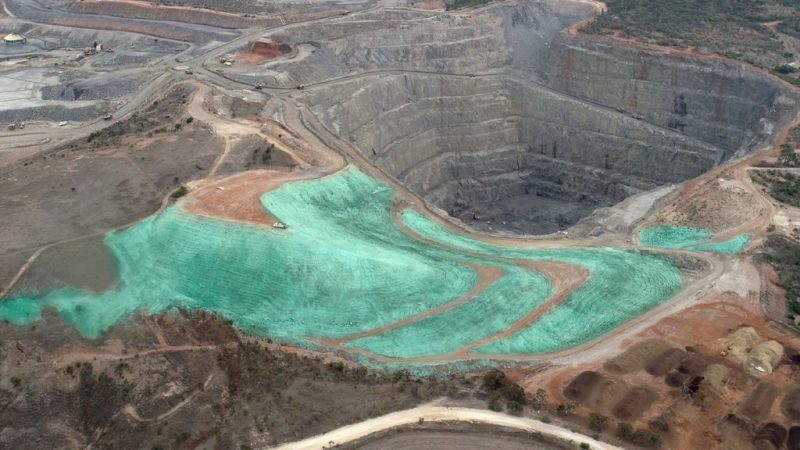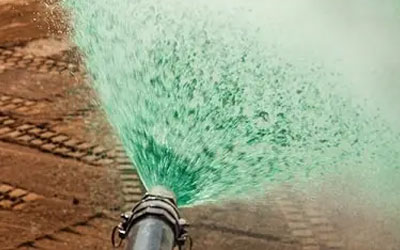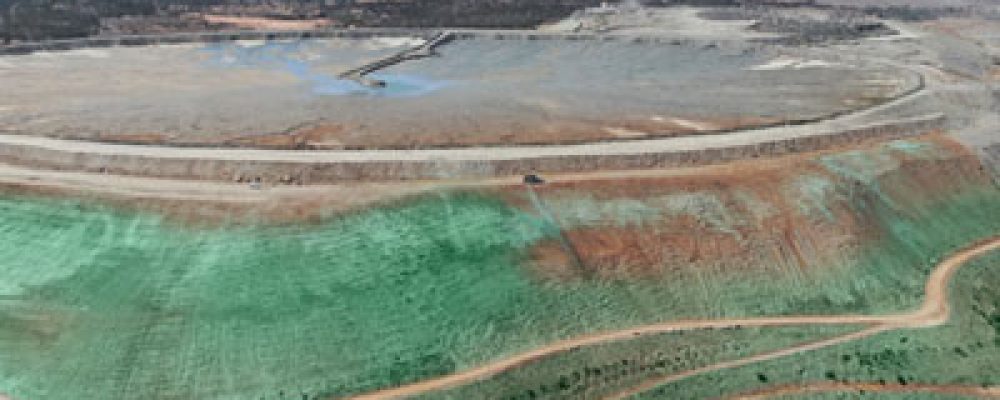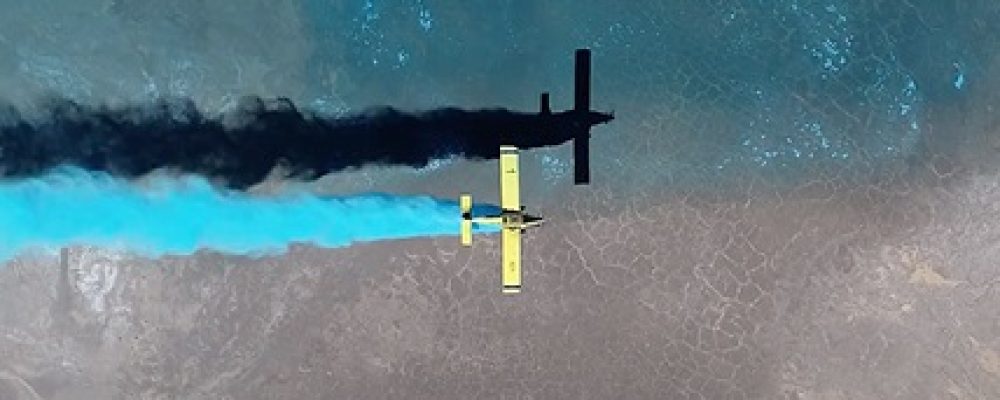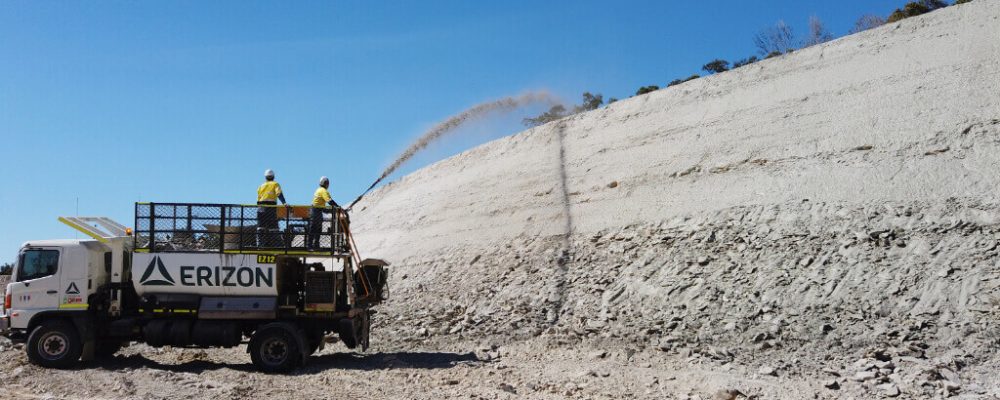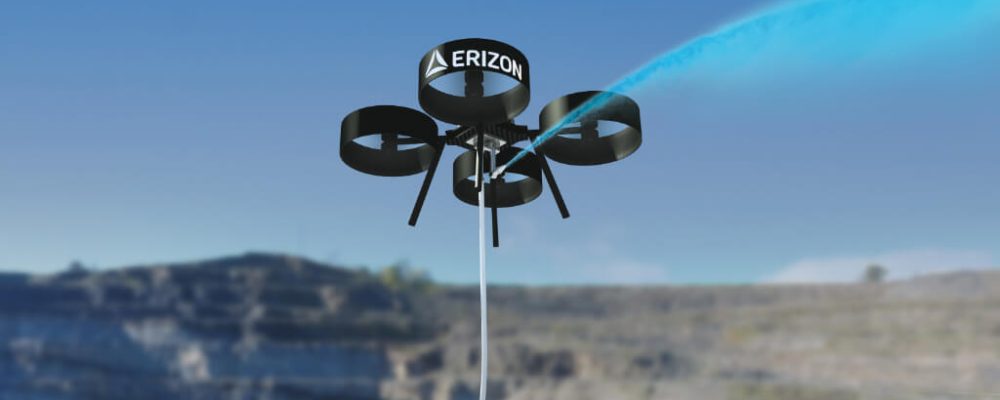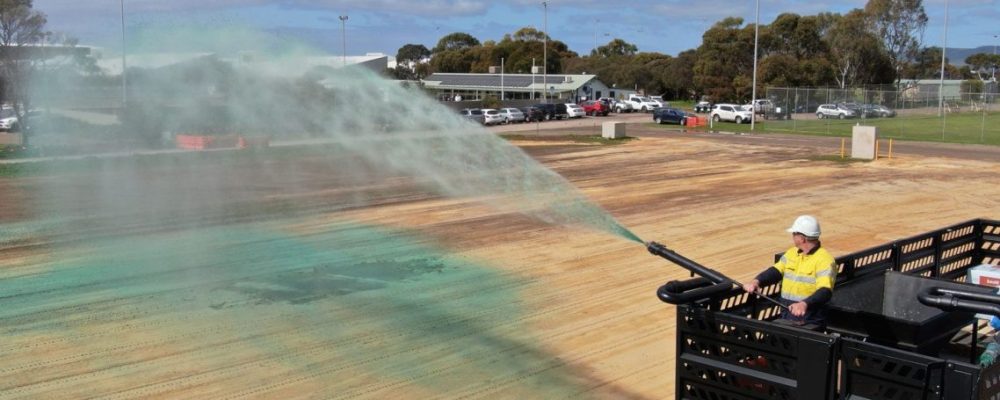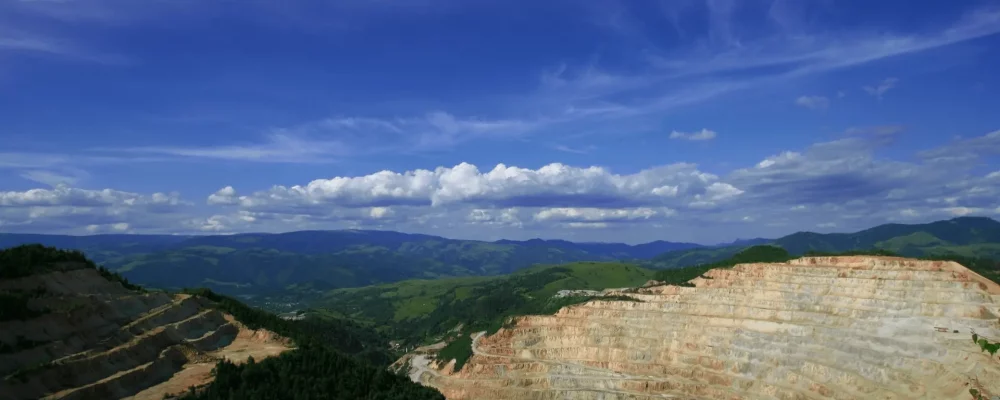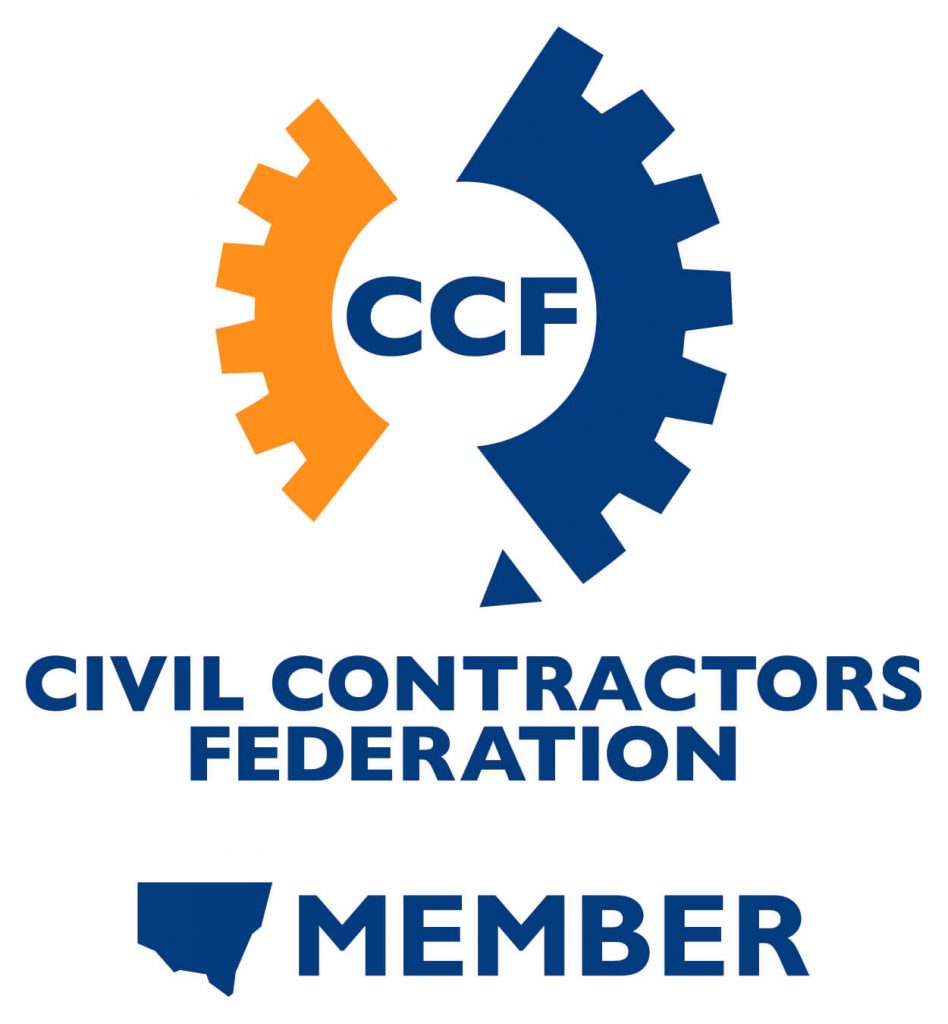What happens when rain falls? Rainwater may get soaked into the soil, evaporate, or it may land on surfaces it can’t penetrate and travel down the streets into a drainage or stream.
When the latter occurs, it’s called stormwater runoff.
Stormwater runoff is produced when rain flows over land or impermeable surfaces such as roofs, sidewalks, and paved roads and heads into the nearest waterway. When rainwater doesn’t soak into the ground, it can carry and deposit harmful pollutants, dirt or dust, chemicals, and litter into water systems.
To prevent its harmful impacts on surrounding ecosystems and nearby communities, it’s crucial to target it at the source and control stormwater runoff. While public education, land use controls, and green infrastructure practices are effective in managing this environmental problem, erosion control measures provide immediate protection while revegetation brings long-term results.
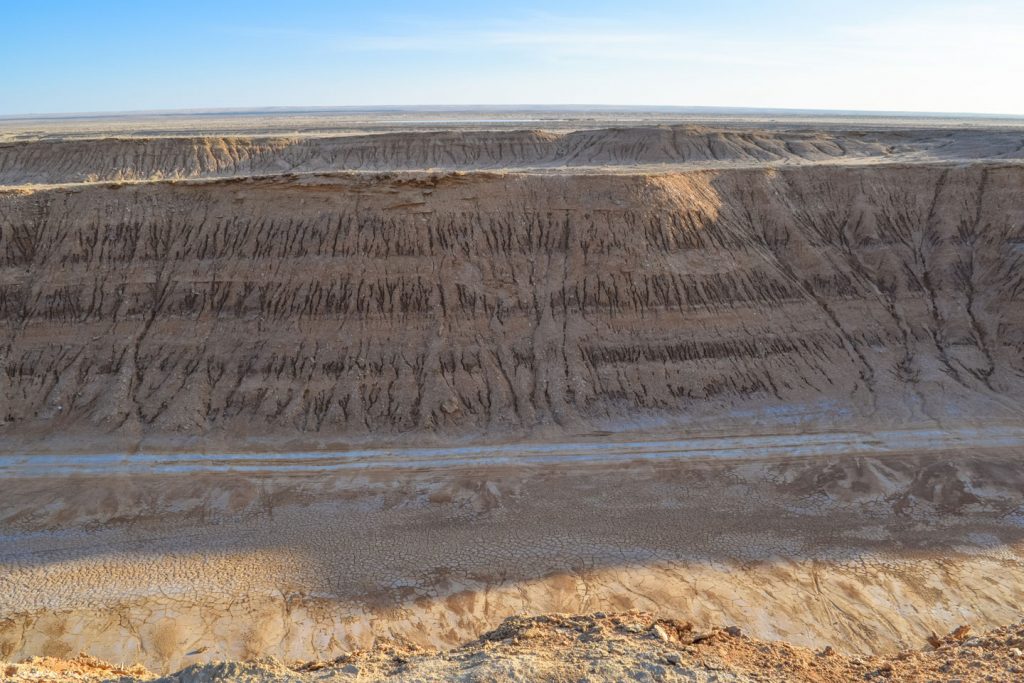
What Is Stormwater Runoff?
Stormwater runoff is rainwater that runs off the land and moves away from where it originally falls. In urban locations, it is carried by a connection of pipes called a stormwater drainage network. Stormwater may be released directly to underground water sources or to natural bodies of water such as rivers, creeks, and the sea.
Because urban areas are more developed and have more impermeable surfaces, more stormwater runoff gets generated, leading to higher volumes being discharged and contaminating these water systems.
Where Does Stormwater Runoff Come From?
Before urbanisation happens, the ground in natural environments is permeable to water. So most of the rainwater penetrates the soil and goes into the groundwater, while some of it may run off into water bodies as the soil becomes too saturated.
However, in highly urbanised locations where there are large concrete areas and roofs, rainwater can’t penetrate the soil, and groundwater recharge is significantly minimised. Instead of infiltrating the soil, larger volumes of rainwater quickly run off these hard, impervious surfaces and become urban stormwater.
Compared to undisturbed, non-urbanised environments where runoff is minimal, urban areas and developed sites generally have more runoff. Some factors that affect the volume of stormwater runoff include soil type, rainfall pattern, and the amount of impermeable area. Consequently, greater runoff rates alter the flow in waterways, affect aquatic life, and increase erosion.
In communities, it’s essential to identify where runoff is coming from to address the problem properly.
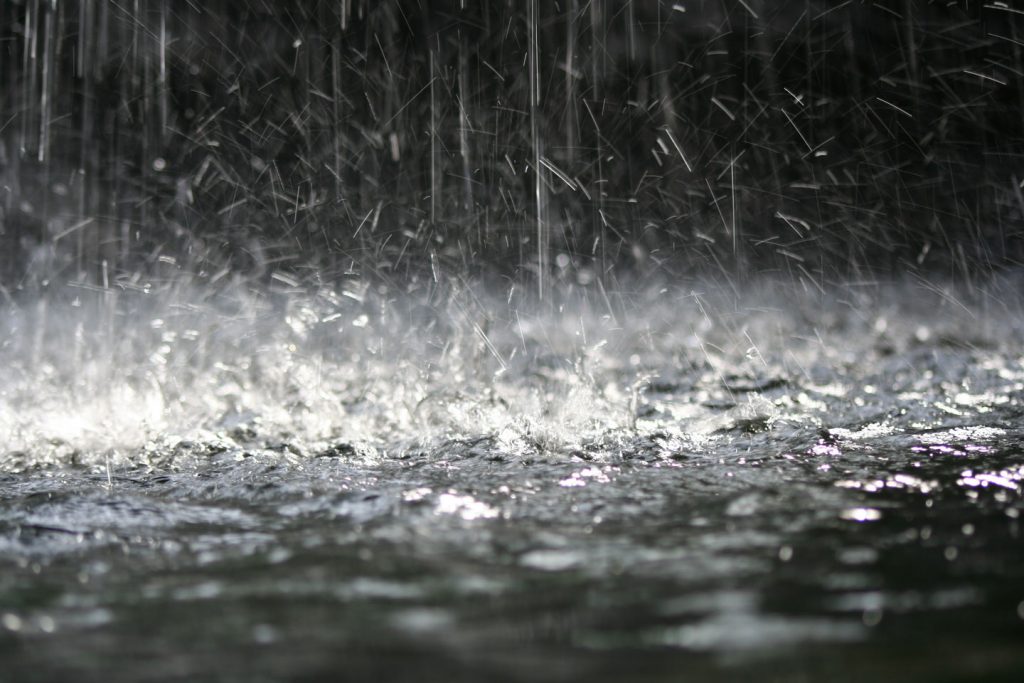
How Can This Affect Us And Our Environment?
As stormwater flows across roads, sidewalks, lawns, and parking lots, it can pick up numerous pollutants that adversely affect communities and the surrounding environment.
Some of the harmful pollutants that get carried into storm drains and waterways such as rivers and streams include fertilizers, pesticides, and other chemicals from lawns and gardens; grease, oil, antifreeze, and heavy metals from vehicles; sand, dust, and sediment from construction sites; and pet waste and litter from homes and businesses.
Even in small amounts, these pollutants can lead to problems. So if not properly managed, stormwater runoff can have severe cumulative impacts on individuals and ecosystems. Here are some of the most common issues that arise:
Flooding
Excess stormwater can lead to flooding that damages public and private property. Aside from being difficult and costly to clean up, flood waters can also threaten public safety as they may lead to drownings.
Pollution
Dirty water, floating trash and debris, and foul orders are not only aesthetically unappealing but can also put public health at risk by contaminating drinking water. Pesticides, fuel or motor oil leaks, and other chemical contaminants are especially harmful to the health of humans and wildlife.
When left uncontrolled, stormwater pollution can significantly increase the cost of water treatment and minimise water bodies’ assimilative capacity. When less water is soaked into the ground, drinking water supplies and streams don’t get replenished. Over time, this may lead to water shortage and insufficient stream flow for marine life.
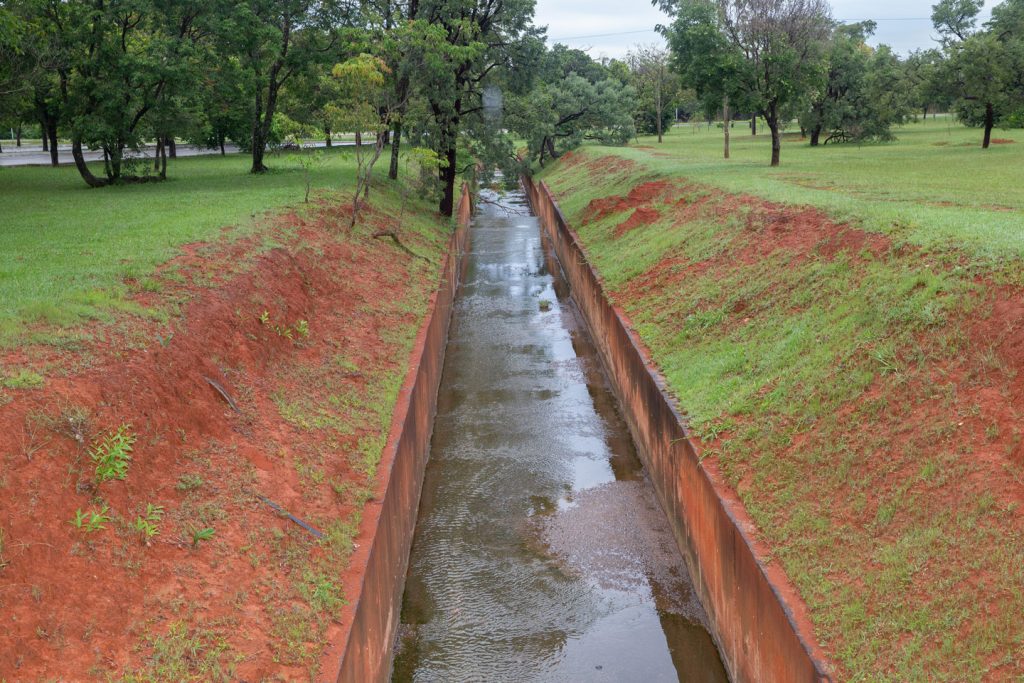
Streambank Erosion
Fast-flowing stormwater runoff can erode stream banks and severely damage marine and wildlife habitats. As excess sediment gets pushed into rivers and streams, it can clog waterways, fill lakes and reservoirs, and prevent sunlight from reaching underwater plants.
Also, excess nutrients from fertilisers and pet waste can fuel algae growth, creating low-oxygen zones that suffocate and kill shellfish, fishes, and other aquatic animals.
Economic Impacts
Because of its effects on marine life, the environment, and stream channels, stormwater runoff consequently leads to impairments in fisheries, tourism, and businesses related to recreational water activities such as swimming and boating.
In forests and vegetated areas, pollutants can get trapped, more water gets absorbed into the ground, and the flow of stormwater runoff gets slowed down. However, in urban and suburban areas, the natural buffers are eliminated, and impervious surfaces encourage stormwater to flow directly into waterways, leading to these problems.
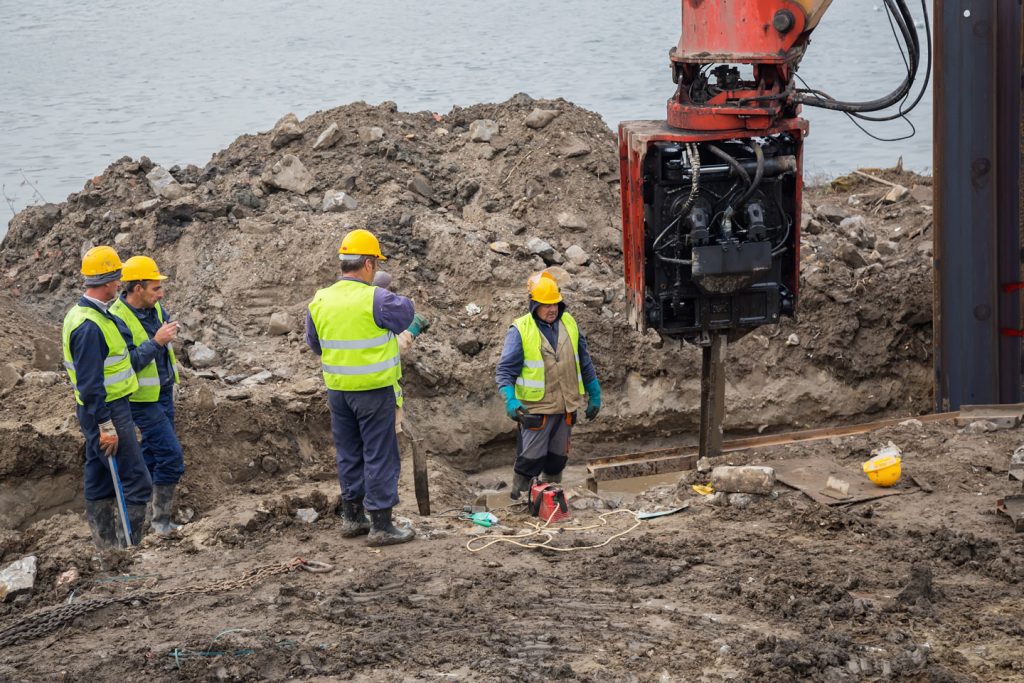
Ways To Manage Stormwater Runoff
To protect water resources, local communities, and the environment, it’s important to implement stormwater runoff solutions effectively. Some of the proven and tested ways to control stormwater include:
Public Education and Outreach
The public is a significant contributor to stormwater pollution. Hence, one way to prevent this is by educating homeowners and businesses on the proper use and storage of toxic substances, equipment maintenance, and lawn care.
Erosion and Sediment Control Solutions
During rain events, stormwater washes off loose soil, debris, sediment, nutrients, and chemicals from construction sites. As stormwater flows and gets contaminated, these pollutants are transported to nearby storm drainage or directly to rivers, coastal waters, and other waterways.
Erosion and sediment control measures are then put in place in construction sites so their operations can resume without putting the surrounding environment and water resources at risk.
Land Use Control Solutions
Local governments use different forms of land use controls, such as subdivision growth controls and zoning ordinances, to limit impervious surfaces. By restraining certain activities within a specific area, encouraging certain land uses and imposing best management practices and site design standards, stormwater runoff can be reduced, and water sources can be protected.
Green Infrastructure Systems
Green infrastructure practices that preserve and use natural landscape features slow down or trap contaminants from stormwater. These may include grassed waterways, rain gardens, rain barrels, vegetated rooftops, forested areas, buffer strips, and permeable pavements. When preserved well, natural areas can provide habitat and flood protection.
All these measures combined can provide an effective stormwater pollution prevention plan, especially when local soil, precipitation, and land use conditions are considered.
How Can Revegetation Reduce Stormwater Runoff?
Have you ever walked outside after the rain and the ground appeared dry but noticed some water caught by trees and shrubs? This is one of the ways vegetation can play a role in erosion control. It minimises the amount of rainwater that reaches the ground.
Through revegetation, areas can be protected against wind and water erosion, and stormwater runoff can be managed.
One of the most fundamental cores to controlling erosion is vegetation cover. The energy from raindrops hitting the surface starts the erosion process. From the trees’ leaves, needles, and branches, to the foliage and flowers of shrubs and grasses, down to their root systems, they all protect the land against excessive stormwater and play a vital role in the water cycle.
Trees don’t only intercept rainwater, but their substantial root systems also improve water infiltration. Bushes and creeping shrubs with thick woody structures also provide a layer of defence and prevent the soil from becoming over-compacted. Their fibrous root systems improve water infiltration as well.
Meanwhile, low-lying creeping plants and grasses cover the ground surface, and their roots bind soil particles. With this, revegetation can significantly reduce sediment and stormwater runoff.
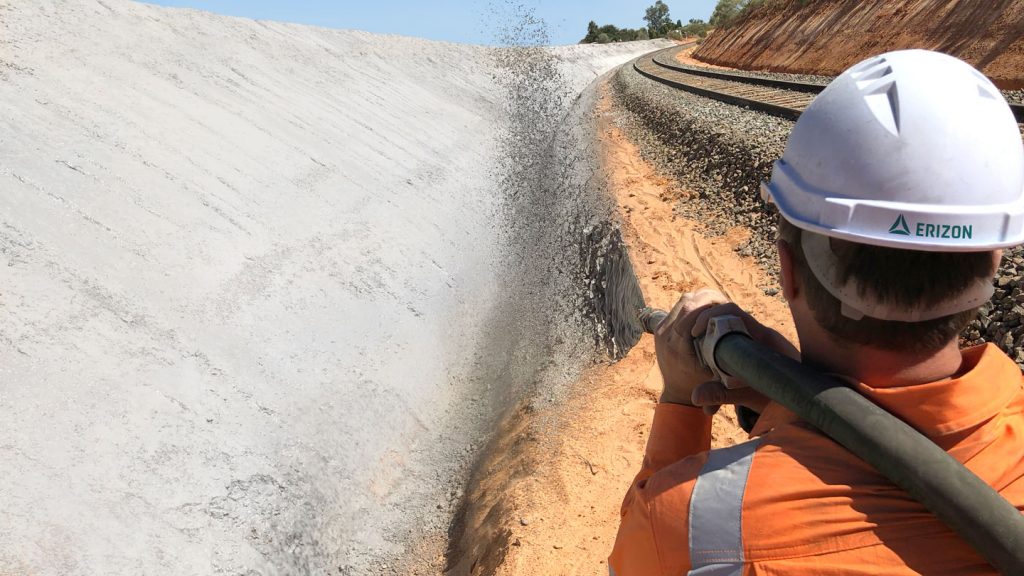
How Erizon Can Help You
As Australia’s leading environmental solutions provider, Erizon specialises in both erosion control and revegetation.
To protect areas quickly from stormwater runoff or to create swales, an erosion control blanket is the most suitable solution. Erizon has scientifically developed an eco-friendly, sprayable synthetic erosion control blanket that can protect any surface from various degrees of erosion and withstand the harshest weather conditions
Its unique blend of minerals, interlocking fibres, and tackifiers form a durable yet flexible crust that binds effectively to stabilise any substrate such as sand, sandy loam, clay, and soil.
Compared to traditional erosion control blankets, it is faster and easier to apply even in difficult-to-reach areas and dangerous terrains using state-of-the-art HydroRigs mounted with hydraulic cannons and extendable hose reels. In just 3 to 5 hours after application, EcoArmour can provide almost immediate erosion control.
With a functional longevity of 20+ years, this solution lasts longer than traditional erosion control solutions. It also meets all relevant transport and main roads specifications, including:
- MRSW52 – Erosion and sediment control
- 20601P – Geobinders
- 20605P – Erosion control blanket
However, for a long-term solution to stormwater runoff, revegetation is the ideal approach. Since good quality topsoil is essential to the success of revegetation projects and fresh topsoil is becoming scarcer and more expensive, Erizon has scientifically developed a sprayable topsoil alternative called EnviroSoil. With its active components including organic fibres, natural soil conditioners, microbial inoculants, and mineral blends, it works better than compost and topsoil replacement in rejuvenating existing degraded soil.
It can improve the composition and texture of even the most badly damaged soils, making them more suitable for plant growth. The solution also contains nitrogen-fixing bacteria and mycorrhizae that work together to simulate the natural cycle and improve germination.
To accelerate vegetation growth and prevent erosion, EnviroSoil can be used together with EnviroLoc Hydromulching BFM. EnviroSoil’s soil-building components combined with EnviroLoc’s interlocking 3D matrix offer an ideal environment that supports fast germination in just 3 weeks. Because EnviroSoil enhances the soil beneath, vegetation growth can be seen at 6 weeks, making it suitable for large-scale revegetation projects.
When implementing revegetation as a solution against stormwater runoff, the value of using mulch in the process can’t be stressed enough. It doesn’t only promote faster vegetation growth, but also absorbs raindrop energy, slows down stormwater runoff, promotes water infiltration, and reduces evapotranspiration. Generally, hydromulching increases moisture retention and offers effective protection on bare ground.
Whether you’re looking for quick or long-term stormwater runoff solutions, we have a suite of products to help you achieve your goal.
However, because the application of EcoArmour, EnviroSoil, and EnviroLoc does not involve a one-size-fits-all approach, it’s crucial to work closely with the experts. Our team will consider your site-specific conditions, requirements, and goals.
Our process starts with comprehensive soil testing and site inspection to determine the best plant species and the timing of application. With our team’s local knowledge, we can modify our erosion control and revegetation approach and practices considering the amount of rainfall, heat, wind, cold, and daylight hours at every stage of the plan. And of course, to ensure project success, we also conduct regular monitoring using a range of techniques including using drones for large-scale projects.
Want to know more about hydromulching and erosion control for stormwater runoff? Find out what you need to know here.
